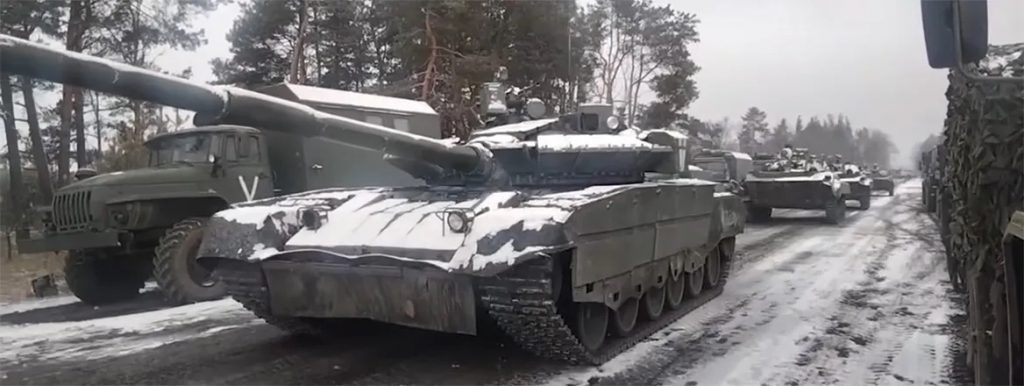
Now that, following decades of non-use, tanks are once again making headlines in Europe, readers rightly demand a short explanation of their origins, development, and role in modern warfare.
Tanks, meaning mechanically-propelled, tracked, weaponized and armored, fighting vehicles, first made their appearance on the battlefield when the British and French armies deployed them in 1916. They went through their greatest days of glory in 1939-45 when the principal belligerents—Germany, the Soviet Union, Britain and the US—all produced them by the thousand (Japan also had them, but in nowhere like the same number or quality). Tanks took a prominent role both in the Arab-Israeli Wars (1948-1982) and in the two Gulf Wars (1991 and 2003-2011). At times, so great was their hold that popular opinion in particular tended to see them as the very symbol of warfare.
1916-1918. Almost from the beginning, tanks fell into two basic kinds: heavy ones, intended to lead the infantry as it tried to occupy and cross the enemy trenches, and light ones meant for follow up operations once those objectives had been achieved. The former moved slowly and were armed with cannon. The latter were faster and were often armed with no more than machine guns. The Germans also built tanks. However, so small were the numbers that came off the assembly lines that they hardly affected the conduct of the war.
1919-45. As World War I ended all the world’s main armed forces experimented with tanks. The outcome was a very large number of different models, including one with no fewer than five turrets and another that could move on rails as well as roads and open terrain. Nevertheless, by the mid-thirties the basic elements that make up a tank had been determined and become well-nigh universal. Including a single turret-mounted gun, a hull, and a suspension system; a configuration that, later on, came to be known as a main battle tank.
During the 1930s Germany pioneered armored divisions. Tanks apart, they were made up of artillery, anti-tank guns and infantry. All under a single headquarters, and all provided with the necessary supply, maintenance and repair services. Strongly supported from the air, they enjoyed their most spectacular successes in 1939-42 when they overran most of Europe and came within a hair of winning World War II both in Russia and in North Africa. Later, in 1943-45, they played an equally important role both on the Eastern and the Western Fronts. The tank’s development may be gauged from the fact that, by 1945, some Soviet ones mounted an awesome 122 mm. gun, a far cry from the 37 mm. that had been the norm even as late as in 1936-37. As guns grew so did the turrets that carried them, the hulls and suspensions that carried the turrets, the armor that protected them, and the engines that drove the lot.
1945-73. Tanks continued to increase in weight and power, finally stabilizing at about 60 tons. Increasingly during this period, it was the Israelis who took the lead in waging modern, mobile, tank-centered warfare. Not only did they fight and win two wars—1967 and 1973—but they started building their own tanks from scratch. Other tank-building countries, Germany with its Leopard II included, sought some kind of balance between firepower, protection and mobility. Not so Israel which, as befitted its limited manpower, put protection first. This approach proved itself during the 1982 Lebanon War when not one Israeli tankman was killed inside his tank.
1973-2022. The period saw any number of technical advances, starting with smoothbore cannon (instead of the traditional rifled one) and ending with the kind of anti-missile missiles designed to prevent enemy missiles from hitting the tank’s own armor. Both in 1991 and 2003, tanks spearheaded the Western invasions of Iraq, easily defeating the fleets of older, Soviet-built, tanks fielded by the latter country. However, even as the tracks churned away in the desert warfare was changing. As more countries either acquired nuclear weapons or the ability to build them relatively quickly, large-scale conventional war appeared to be on the retreat. From Vietnam to Afghanistan, its place was taken by asymmetric war, insurgency, guerrilla, terrorism, or whatever it may have been called. As these forms of conflict showed, in them the role tanks could play was limited, often almost nonexistent.
2022-23. When Putin invaded Ukraine in 2022 his generals used tanks to spearhead their forces. And rightly so because Ukraine, with its wide-open, flat terrain, presents invaders with ideal tank country. But that did not mean a return to World War II. As also happened to the Israelis in Gaza e.g, Russia’s tanks were not used in their “classic” role of taking on enemy tanks and opening the way to large-scale maneuvering deep behind the front. Instead they served as close artillery support, helping infantry to advance street by street, building by building, in urban terrain; more like Stalingrad than like the vast maneuvers that led up to it and, now carried out by the Russians, followed it.
The future. Do current events in Ukraine harbor the return of large-scale conventional warfare and, with it, of tanks? Some experts think so and are even now designing all sorts of futuristic fighting vehicles. All this is good and well, but it ignores the fact that the one reason why the current war can be waged at all is because Ukraine’s arsenal, like that of Iraq before it, is limited to conventional weapons. One can hear the hard men in the Kremlin say:
Tanks here, tanks there. We’ve got
The atom bomb, and they do not.
